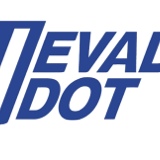Information
-
Document No.
-
Sponsor
-
Airport
-
Conducted on
-
Inspected by
-
Airport Personnel
I. Pre-Inspection
-
1. Reviewed previous inspection?
-
1a. Any outstanding issues from previous inspection?
-
2. Reviewed Airport Master Record (5010 Form)?
-
Note changes in Section XII.
-
3. Reviewed Airport Sketch?
-
3a. Airport Sketch changes?
-
4. Reviewed Airport Facility Directory?
-
4a. Airport Facility Directory changes?
-
5. Interviewed Airport Representitive?<br>
-
5a. Interview items?
-
5b. Wildlife Management Survey?
-
5b-1. Has your airport had a Wildlife Site Visit?
-
If yes, when was it completed?
-
5b-2. Does your airport have a Wildlife Hazard Assessment?
-
If yes, when was it completed?
-
5b-3. Does your airport have a Wildlife Hazard Management Plan?
-
If yes, when was it completed?
-
5b-4. Do you have a state wildlife depredation permit?
-
5b-5. Does your airport have fencing around the airport?
-
If yes, how high is the fence?
II. Runways
-
1. Length (changes will require completing section XI)
-
2. Width
-
3. Surface Condition
-
4. Pavement Edge
-
5. Runway Object Free Area / Primary Surface
-
6. Approach Surface (separate form is required)
-
7. Transitional Surface
-
8. Runway Protection Zone
-
9. Surface Gradient
-
10. Line of Sight
III. Taxiways
-
1. Width
-
2. Surface Condition
IV. Safety Areas
-
1. Dimensions Maintained
-
2. Ruts/Surface Variations
-
3. Drainage
-
4. Objects in Safety Area/Frangible Mounting
V. Markings, Signs, and Lighting
-
1. Runway Markings
-
2. Runway Signs
-
3. Runway Lighting/Reflectors
-
4. Hold Position Markings
-
5. Hold Position Signs
-
6. Taxiway Markings
-
7. Taxiway Signs
-
8. Taxiway Lighting/Reflectors
-
9. Obstruction Markings/Lighting
VI. Navigation/Weather
-
1. Airport Beacon
-
2. PAPI/VASI
-
3. AWOS
-
4. Wind Indicators
-
5. Segmented Circle
VII. Fuel Storage Areas
-
1. Fencing/Locks
-
2. Piping Protected
-
3. No Smoking/Flammable/Identification Signs
-
4. Deadman Controls
-
5. Fire Extinguishers
-
6. Emergency Shutoff
-
7. Fuel Leaks
-
8. Bonding Wire/Clips
-
9. Grounding
-
10. Vegetation/Trash
-
11. Evidence of Smoking
-
12. Fuel Filters
VIII. Mobile Fuelers
-
1. No Smoking Signs (in cab)
-
2. No Smoking/Flammability/Identification Signs (on tank)
-
3. Bonding Wire/Clips
-
4. Deadman Control
-
5. Fire Extinguishers
-
6. Emergency Shutoff Operable and Signed
-
7. Vehicle Exhaust Shielded
-
8. Fuel Leaks
-
9. Evidence of Smoking (no ashtray)
-
10. Vehicle Parking (10' apart, 50' from structure, on pavement)
IX. Observations
-
1. Wildlife
-
2. Construction
-
3. Hazards
-
4. Miscellaneous
X. Sketches
-
Sketches
Sketch
-
Add drawing
XI. Runway Length Change (if applicable)
-
Was there a change in the length/direction of a runway or displaced threshold?
-
Note: Horizontal DATUM should be NAD83 / Vertical DATUM should be NAVD88
-
1. Runway ID
-
2. Type of change
-
3. Date of change
-
4. Old runway length
-
5. New runway length
-
6. Distance runway extended or shortened / direction
-
7. Runway width
-
8. Runway end change
-
9. New Latitude and Longitude
-
10. New runway end elevation
-
11. New runway touch down zone elevation (highest elevation in the first 3,000 feet)
-
12. New runway azimuthal (true)
-
13. Displaced threshold length
-
14. Displaced threshold width
-
15. Displaced threshold Latitude and Longitude
-
16. Displaced threshold elevation
-
17. Change to ARP Latitude and Longitude (if appropriate)
-
18. Additional information
XII. Airport Master Record Changes
-
Airport Master Record Changes
Change
-
Number of item
-
Old Information
-
New Information
XIII. Signatures
-
Airport Representative
-
State Inspector






